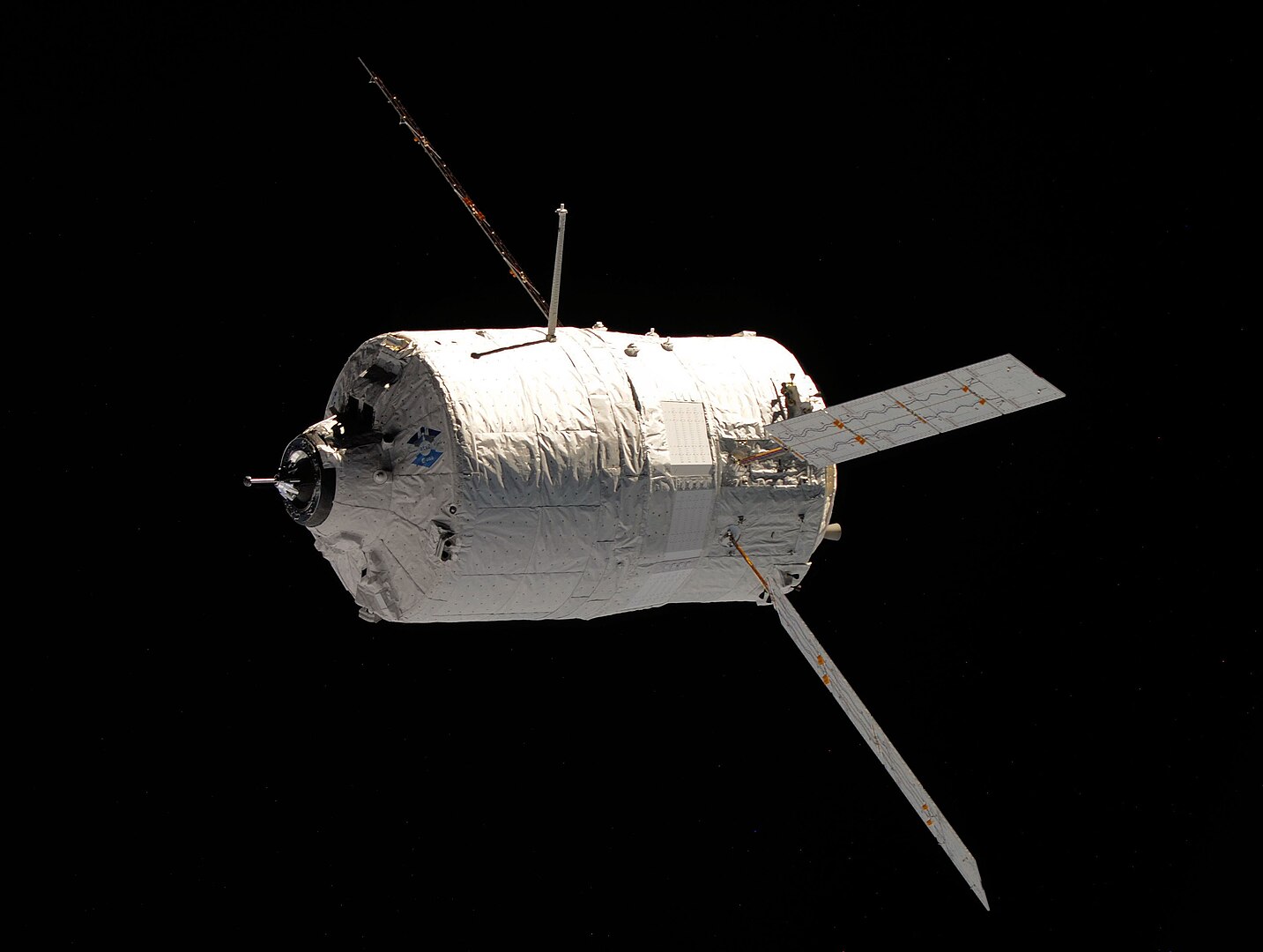
Automated Transfer Vehicle (ATV)
In-active Cargo Cargo Resupply Payload Capacity: 7667 kg Diameter: 4.5 m Height: 10.3 m()
March 9, 2008
Cargo Earth Orbit Logistics
Flight Life
Six months when docked
Description
In terms of its role, the ATV was designed to complement the smaller Russian Progress spacecraft, possessing three times its useful payload capacity. Similar to the Progress, it would carry both bulk liquids and relatively fragile freight, which would be stored within a cargo hold maintained at a pressurized shirt-sleeve environment in order that astronauts would be able to access payloads without the need to put on spacesuits. The pressurized cargo section of the ATV was based on the Italian-built Multi-Purpose Logistics Module (MPLM), which was a Shuttle-carried "space barge" that had been previously used for transporting equipment to and from the Station. Unlike the MPLM, the ATV used the same docking mechanism as employed upon the Progress. The ATV, like the Progress, also serves as a container for the station's waste. Each ATV weighs 20.7 tonnes at launch and has a cargo capacity of 8 tonnes.
History
During the 1990s, as the International Space Station program was taking place, it was collectively recognised by the 15 participating nations that, upon completion, the International Space Station (ISS), a crewed space station in Low Earth orbit (LEO), would require regular resupply missions in order to meet the needs of the onboard crew as well as to deliver apparatus to support the various scientific tests that would be performed on board. In October 1995, it was agreed that, amongst the various contributions to the ISS program that Europe would assume responsibility for under the vestiges of the European Space Agency (ESA), would be the Automated Transfer Vehicle, or ATV; this logistics-orientated spacecraft would perform the identified resupply missions to ISS.
Falcon 9
Starlink Group 11-14
Space Launch Complex 4E - Vandenberg SFB, CA, USAA batch of 28 satellites for the Starlink mega-constellation - SpaceX's project for space-based Internet communication system.
Falcon 9
Starlink Group 6-81
Space Launch Complex 40 - Cape Canaveral SFS, FL, USAA batch of 29 satellites for the Starlink mega-constellation - SpaceX's project for space-based Internet communication system.
Electron
The Nation God Navigates (iQPS Launch 5)
Rocket Lab Launch Complex 1B - Rocket Lab Launch Complex 1, Mahia Peninsula, New ZealandSynthetic aperture radar Earth observation satellite for Japanese Earth imaging company iQPS.
Ariane 62
Sentinel-1D
Ariane Launch Area 4 - Guiana Space Centre, French GuianaSentinel-1D carries an advanced radar technology to provide an all-weather, day-and-night supply of imagery of Earth’s surface as part of the Sentine…
Long March 7A
Yaogan 46
201 - Wenchang Space Launch Site, People's Republic of ChinaClassified Earth observation satellite officially reported as for "national resources/hydrology/meteorology surveying & disaster management" purposes.
LVM-3 (GSLV Mk III)
CMS-03 (GSAT-7R)
Satish Dhawan Space Centre Second Launch Pad - Satish Dhawan Space Centre, IndiaCommunications Satellite for the Indian Navy, replacing GSAT-7 for secure real-time links between Indian warships, submarines, aircraft, and shore-ba…
Falcon 9
Bandwagon 4 (Dedicated Mid-Inclination Rideshare)
Space Launch Complex 40 - Cape Canaveral SFS, FL, USADedicated rideshare flight to a mid-inclination orbit with dozens of small microsatellites and nanosatellites for commercial and government customers.
Falcon 9
Starlink Group 11-23
Space Launch Complex 4E - Vandenberg SFB, CA, USAA batch of 28 satellites for the Starlink mega-constellation - SpaceX's project for space-based Internet communication system.
Long March 2
Shenzhou 21
Launch Area 4 (SLS-1 / 921) - Jiuquan Satellite Launch Center, People's Republic of ChinaTenth crewed flight to the Chinese space station.
Falcon 9
Starlink Group 10-37
Space Launch Complex 40 - Cape Canaveral SFS, FL, USAA batch of 29 satellites for the Starlink mega-constellation - SpaceX's project for space-based Internet communication system.

